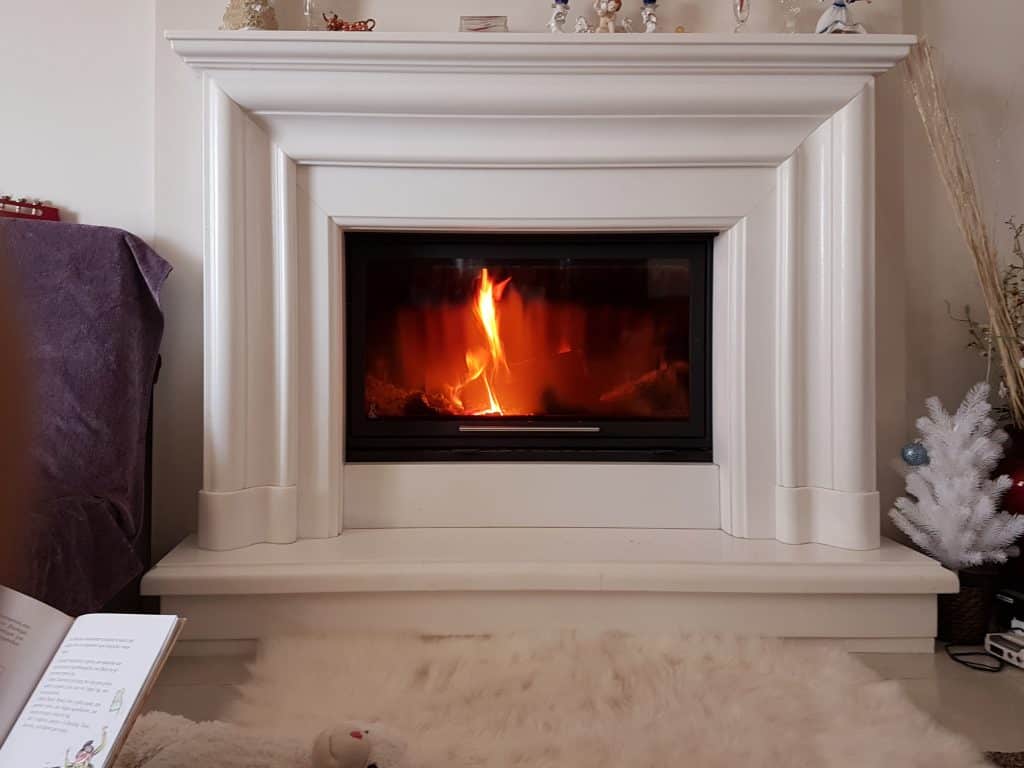How Hot Does A Fireplace Get? Unveiling the Secrets of Cozy Flames

Nothing beats the cozy atmosphere that a crackling fireplace provides on a chilly day. But have you ever wondered how hot a fireplace can get? At 1800 Chimney, we understand the importance of knowing your fireplace’s heat potential to ensure safety and efficiency. In this blog post, we’ll explore the temperatures fireplaces can reach, factors influencing their heat output, and some safety tips to keep your home warm and secure.
The Scorching Temperatures of Fireplaces: A Closer Look
A fireplace’s temperature can vary significantly depending on its type and fuel source. Here’s a rundown of the heat generated by different kinds of fireplaces:
- Wood-burning fireplaces: These traditional fireplaces can reach temperatures between 1,100°F and 1,500°F. However, the heat output may fluctuate based on factors like wood type, moisture content, and burning efficiency.
- Gas fireplaces: Natural gas and propane fireplaces can generate temperatures between 1,000°F and 1,200°F, offering a cleaner and more controlled heating alternative to wood-burning fireplaces.
- Electric fireplaces: These modern, low-maintenance options usually have a temperature range of 400°F to 600°F. Although they may not reach the same scorching temperatures as their wood or gas counterparts, electric fireplaces still provide ample warmth and ambiance for your living space.
Factors Affecting Fireplace Temperatures
Several factors can influence the heat output of your fireplace:
- Fuel type: As mentioned earlier, wood, gas, and electric fireplaces have different temperature ranges due to their unique fuel sources.
- Fireplace design: The size, shape, and materials used in constructing your fireplace can affect its heat output. For example, a larger firebox can accommodate more fuel, while a well-designed airflow system can enhance combustion efficiency.
- Maintenance: A clean and well-maintained chimney is crucial for optimal fireplace performance. A clogged or damaged chimney can hinder airflow, reducing the heat output and potentially causing hazardous situations.
Fireplace Safety Tips to Keep in Mind
Understanding the temperature potential of your fireplace is crucial for maintaining a safe and comfortable environment. Here are some safety tips to follow:
- Install a fireplace screen or door: This will prevent hot embers from escaping the firebox and causing burns or fires.
- Keep combustibles away: Keep flammable items at least three feet away from the fireplace. This includes flammable items like furniture, drapes, and decorations.
- Schedule regular chimney maintenance: Hiring a professional chimney sweep to inspect and clean your chimney at least once a year is essential for maintaining safe and efficient fireplace operation. This routine checkup will help identify and address any potential hazards or performance issues.
- Use the right fuel: For wood-burning fireplaces, use only seasoned hardwoods like oak, maple, or hickory to ensure a cleaner and hotter burn. Avoid using green or wet wood, which can cause creosote buildup and reduce heat output.
- Install smoke and carbon monoxide detectors: These instruments are essential for detecting any hazardous gases or smoke in your residence and can warn you of potential dangers before they pose a life-threatening risk.
Fireplaces can reach impressive temperatures, providing a warm and inviting atmosphere for your home. By understanding the factors that affect their heat output and following essential safety tips, you can enjoy your fireplace to the fullest while keeping your home safe and secure. Remember, proper maintenance and care are crucial for optimal fireplace performance. For expert assistance with chimney service, fireplace installation and repairs, and more, contact 1800 Chimney to schedule an appointment with our experienced professionals today.
